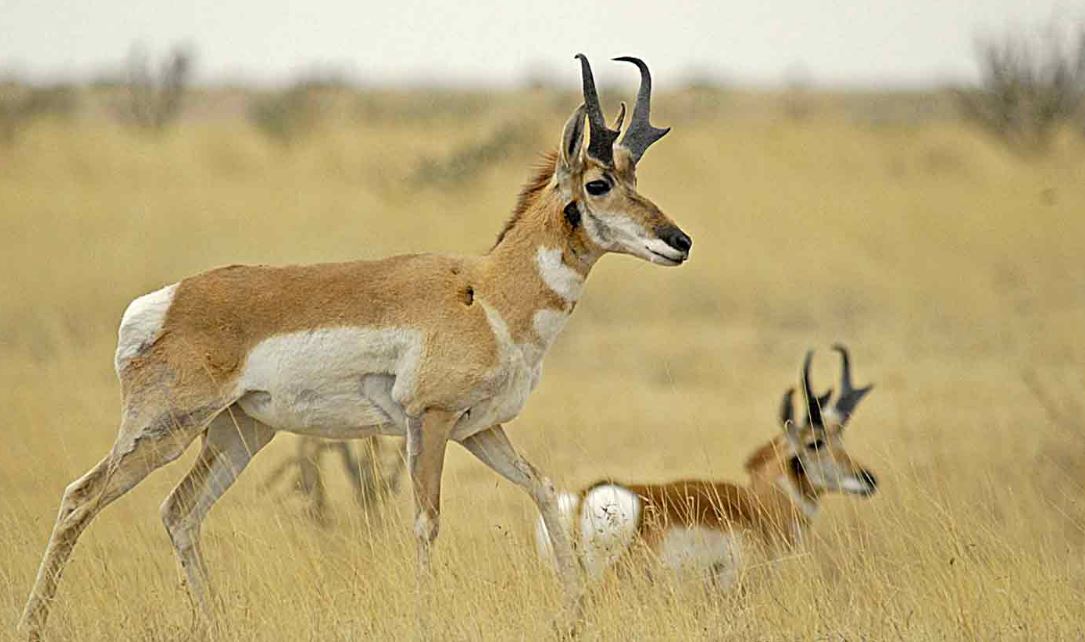The pronghorn population in Texas in on the rise according to officials with Texas Parks and Wildlife Department (TPWD). The Trans-Pecos Pronghorn Restoration Project progressed with another successful relocation recently of 109 pronghorn, helping to boost once-declining numbers in that area.
This marks the fifth year that pronghorn have been transplanted from healthy populations around Pampa in the Texas Panhandle to an area northeast of Marfa to supplement severely depleted pronghorn populations in the Trans Pecos region.
The relocation process was coordinated among the Borderlands Research Institute at Sul Ross State University (BRI), Trans-Pecos Pronghorn Working Group, Texas Parks and Wildlife Department (TPWD), Texas Parks and Wildlife Foundation (TPWF) and USDA-Wildlife Services. Quicksilver Air, Inc. conducted the capture.

Texas’ Trans-Pecos Pronghorn Population
The Trans-Pecos Pronghorn Restoration Project is a five-year, $1.4 million public-private partnership with the TPWF. To date, more than $900,000 has been secured. The objective of the Trans-Pecos Pronghorn Restoration Project is to bolster declining pronghorn populations through wildlife management practices, including: translocations, habitat improvements, and predator management.
At least 17,000 pronghorn historically roamed the West Texas region, but by 2012 there were estimated to be less than 3,000. As of last summer, pronghorn numbers had doubled, based on a TPWD aerial census survey.
Pronghorn on Rise, With Help
“With the help of Mother Nature, translocations, and other management actions populations are bouncing back in this region of Texas,” said Shawn Gray, TPWD Pronghorn Program Leader. “We hope populations in our restoration areas will continue to grow and become another source for pronghorn in the next few years to help supplement other herds in the Trans-Pecos.”
Gray noted that survival and production rates among transplanted pronghorn have been encouraging over the last few years, thanks to improved range conditions and intensive management activities.
“Historic drought severely impacted survival in 2011 at just 20 percent, while good range conditions and more intensive management actions have led to much higher survival rates of between 70-85 percent during the other translocations,” he noted. “Over the last four years, herds that received transplanted pronghorn have done well and have had above average fawn production.”
The relocation process is not your ordinary roundup.
Moving Pronghorn Between Populations
At the capture site, workers take each animal’s temperature to monitor stress, along with blood and fecal samples for disease surveillance. The pronghorn also receive a mild sedative to minimize stress during capture and transport. Ear tags are attached for identification. Forty of the latest group of captured pronghorn were fitted with satellite radio collars, programmed to collect GPS locations every 15 minutes. At about 1 ½ years post-release, the satellite collars will automatically drop from the animals and be retrieved by researchers to refurbish and redeploy in future translocations. After processing, the pronghorn were transported by trailer to the release site northeast of Marfa.
“The capture could not have gone any smoother,” said Dr. Bob Dittmar, Wildlife Veterinarian for TPWD. “The pronghorn were in excellent shape and traveled really well.“
Population Monitoring
During the next year, the BRI and TPWD will closely monitor the translocated pronghorn to determine survival, reproductive productivity, fawn survival, habitat utilization, and movements. This research has and will continue to define the best management practices essential in growing Texas pronghorn populations in the Trans-Pecos region.
“We sincerely appreciate all the cooperation and support from our partners and the Pampa and Trans-Pecos communities,” stated Gray. “Their continued support will ensure pronghorn herds in the Trans-Pecos will prosper in our desert grasslands.” It will take continued effort in the forms of herd and harvest management to ensure pronghorn hunting into the future.